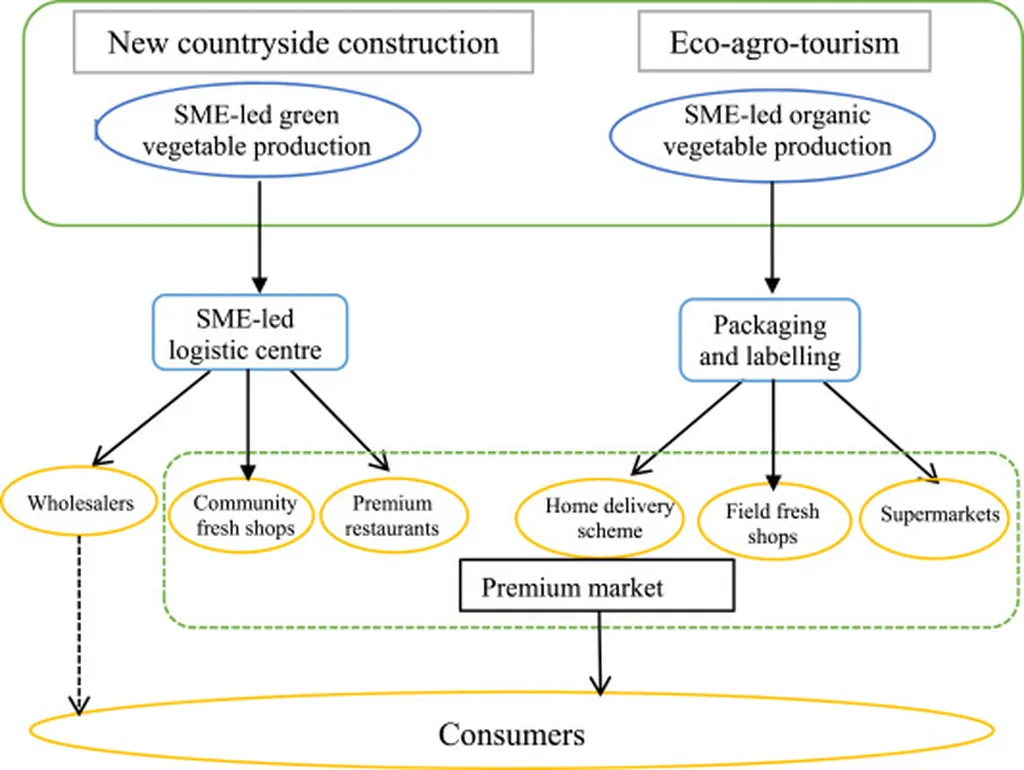In the intricate world of agricultural supply chains, government subsidies often serve as a lifeline, bolstering production and innovation. Yet, a recent study published in *Agriculture* (translated from Chinese as “Nongye” or 农业) sheds light on a critical but often overlooked challenge: the internal policy conflicts that can arise between competing government departments, potentially undermining the efficacy of these subsidy programs. Led by Aibo Yao from the School of Management at Wuhan University of Science and Technology, the research offers a nuanced look at how interdepartmental coordination—or the lack thereof—can significantly impact the overall performance of agricultural supply chains.
At the heart of the study is a game-theoretic model that simulates the strategic interactions between two key government bodies in China: the Agriculture and Rural Affairs Department (ARAD) and the Development and Reform Commission (DRC). Each department operates with distinct objectives and performance indicators, leading to a complex web of subsidy types: production and cold-chain subsidies managed by ARAD, and platform operation and blockchain subsidies overseen by DRC. The research reveals that while individual subsidies may achieve their departmental goals, their combined impact can be suboptimal without higher-level coordination.
“Department-specific performance indicators can significantly distort the overall effectiveness of subsidies,” Yao explains. “This misalignment can lead to a situation where the sum of individual subsidy impacts is less than the desired whole, ultimately affecting the social welfare and commercial viability of the agricultural supply chain.”
The study’s findings are particularly relevant for the energy sector, where agricultural supply chains play a crucial role in bioenergy production and distribution. Efficient coordination between government departments can ensure that subsidies are allocated in a way that maximizes social welfare and supports the commercial viability of energy-related agricultural projects. For instance, the research highlights that a subsidy portfolio combining production and platform operation subsidies consistently yields superior performance.
“This research provides actionable insights for optimizing interdepartmental coordination to enhance supply chain performance,” Yao adds. “By understanding the strategic interactions between different subsidy types, policymakers can design more effective and cohesive subsidy programs that align with broader economic and social goals.”
The implications of this research extend beyond China, offering valuable lessons for other countries grappling with similar challenges in their agricultural and energy sectors. As governments worldwide seek to balance economic growth with environmental sustainability, the need for coordinated policy-making becomes ever more critical.
In the broader context, Yao’s work underscores the importance of interdepartmental collaboration in achieving optimal outcomes. “Our findings suggest that a more holistic approach to subsidy design and implementation can lead to better alignment between departmental goals and overall supply chain performance,” Yao notes. “This can ultimately enhance the commercial viability of agricultural projects and support the broader objectives of the energy sector.”
As the world continues to grapple with the complexities of agricultural and energy supply chains, Yao’s research offers a timely reminder of the need for coordinated, strategic policy-making. By addressing the internal conflicts that can arise between government departments, policymakers can ensure that subsidy programs are not only effective but also aligned with the broader goals of social welfare and economic growth.

